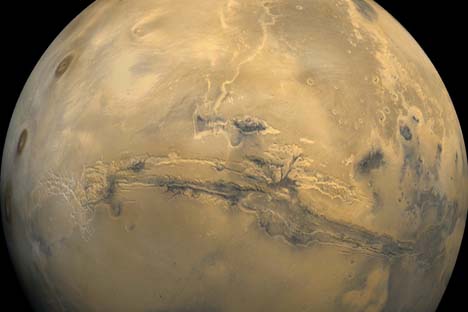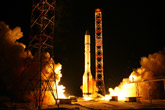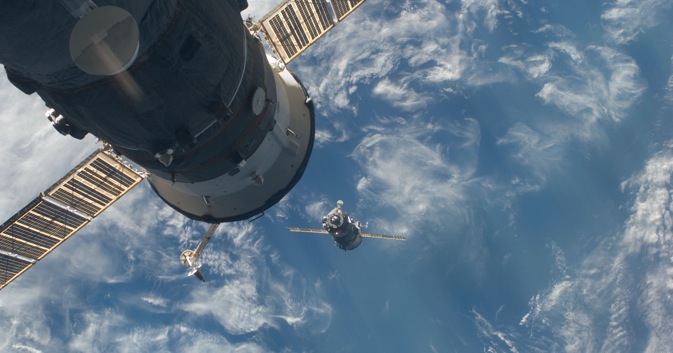India to launch second moon mission without Russia

The Chandrayaan-II project was originally envisaged to be a joint mission between ISRO and Roscosmos. Source: NASA
The Indian Space Research Organisation (ISRO) decided not to continue cooperation with the Russian Federal Space Agency (Roscosmos) in Chandrayaan-II, India’s second moon mission, Indian media publications reported.
Chandrayaan-II is the follow-on to India’s first unmanned lunar probe, Chandrayaan-1, which successfully reached lunar orbit in late 2008 and operated for almost a year before overheating caused a premature termination of the mission that was nonetheless declared a success, according to Space News.
The Chandrayaan-II project was originally envisaged to be a joint mission between ISRO and Roscosmos. Under the agreement approved by the Indian Government in September 2008, while ISRO was to provide for the launch by its workhorse, GSLV, as also the orbiter and the rover, the Russian agency was to provide the lander, the Deccan Herald said. The mission was scheduled for the current year, but sources told the paper that it was pushed back to 2016.
Russia encountered a problem in the wake of the Phobos-Grunt fiasco when the spacecraft it launched in November 2011 to retrieve soil samples from the Martian moon Phobos, became stuck in Earth's orbit after its engines failed to fire and crashed back to Earth. The Russian agency reviewed their inter-planetary missions and decided to increase the mass of the moon lander.
Roscosmos consequently suggested to ISRO two opportunities for launching of its Chandrayaan-II rover - either 2015 or 2017 aboard Soyuz, the Russian spacecraft with a rider that the 2015 opportunity could involve mass limitation for the rover and entitle a higher risk, according to the Deccan Herald report.
India’s Minister of State in the Prime Minister's Office V Narayansamy reported recently to the country’s upper house of parliament that Russia was out of the Chandrayaan-II mission since certain changes suggested by Roscosmos would lead to a major programmatic realignment, the Deccan Herald said. The revised plan necessitated an increase in the mass of the lander, which would have required the ISRO to decrease the mass, and consequently the reliability of its rover, the paper cited Narayanasamy as saying.
A review by an expert panel, headed by former ISRO chairman U R Rao, recommended indigenous development of the lander module. Experiments on the lander are being carried out, and the spacecraft is being reconfigured, according to the report.
Related:

Indian, Chinese rockets to rival Russian carriers by 2015
“There was a failure that Russia experienced. After that, the lander has become heavier, which is not something we can carry on our launch vehicle,” Rao was quoted by the paper as saying.
“The integrated review of Chandrayaan-II recommended that India could realize the Lander module in the next few years,” Narayanasamy said, according to the paper. “Currently the spacecraft is being reconfigured for the proposed Indian Rover and Lander modules.”
According to the minister, ISRO has already made some progress with the development of rover module and a few scientific instruments to be flown to the Moon.
Narayanasamy said the details of changes in the configuration and the mission profile were being finalised and the payloads of the lander would be finalised in due course taking into account the weight, volume and power constraints of the lander, according to a report in The Hindu.
Based on Deccan Herald, The Hindu, SpaceNews.
All rights reserved by Rossiyskaya Gazeta.
Subscribe
to our newsletter!
Get the week's best stories straight to your inbox
